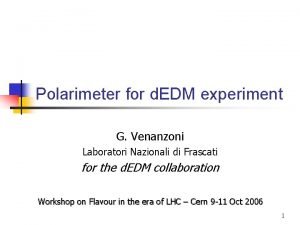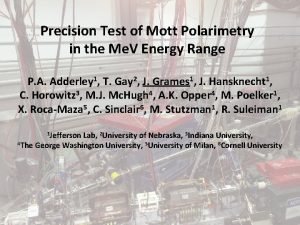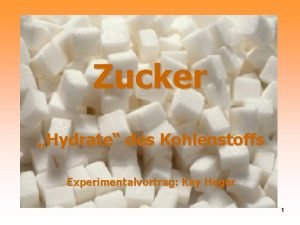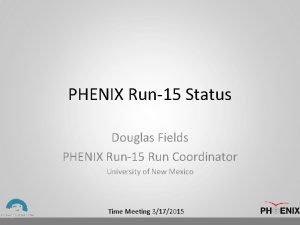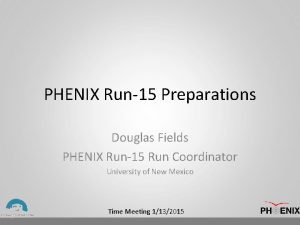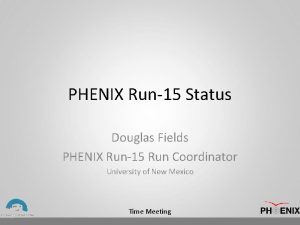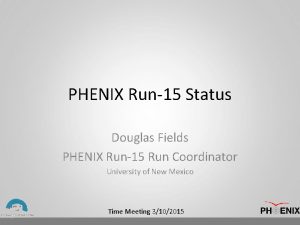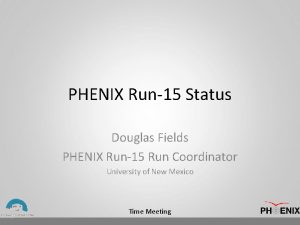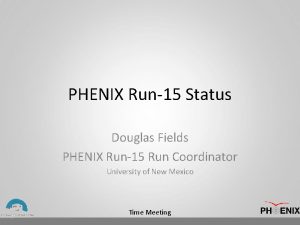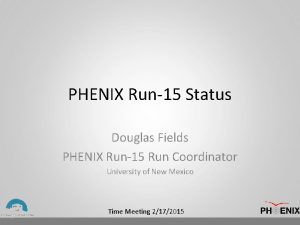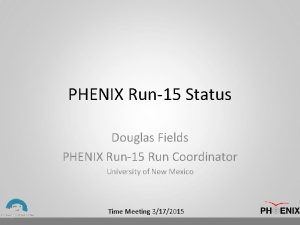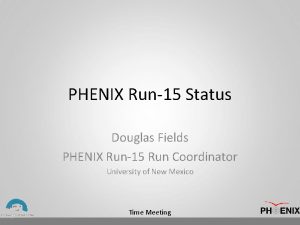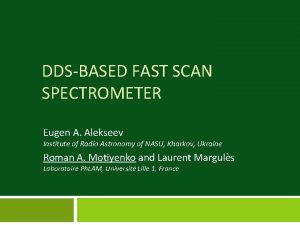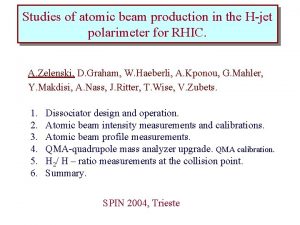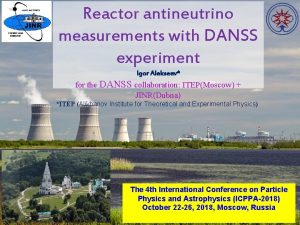Hjet polarimeter in Run15 I Alekseev G Atoian


















- Slides: 18

H-jet polarimeter in Run-15 I. Alekseev, G. Atoian, Y. Makdisi, A. Poblaguev, J. Ritter, D. Svirida, A. Zelenski Many contributions from CAD beam instrumentation group and BNL Instrumentation Division. RHIC-SPIN, February 6, 2015 1

H -jet polarimeter. Record 12. 6∙ 1016 atoms/s Atomic Beam intensity. H-jet thickness at the collision point-1. 2 ∙ 1012 atoms /cm 2

Schematic view of the H-jet detectors During the upgrade was replaced: • detectors (Si-strip detector, ceramic boards) • flanges • p/amplifiers • data acquisition ? Detector installed in the tunnel and tested. Holding field magnet 3

New Si-strip detector, Hamamatsu. New Si-strip detectors were purchased with RBRC contribution.

New Si-strips detector assembly 5

New Si-strips detector assembly 6

Characteristics of silicon detectors Old detectors New detectors Number strips 8 12 Strip size 4. 4 mm x 150 mm 3. 7 mm x 180 mm Depletion region 400 um 500 um Detector size 80 mm x 50 mm x 3 ~ 120 cm 2 47. 3 mm x 8 ~ 180 cm 2 Effective detector size 4. 4 mm x 50 mm x 3 x 8 ~ 53 cm 2 3. 7 mm x 90 mm x 12 x 2= ~ 80 cm 2 Entrance window thickness A l = 1 um, Si. O 2 = 1 um; p+ = 1 um A l = 0. 6 um, Si. O 2 = 0. 2 um; p+ = 0. 2 um Jet-target 16 ch 12 ch Beam 16 ch 12 ch 7

100 Ge. V proton beam, G. Atoian Old detectors New detectors Elastic and inelastic protons separated Elastic and inelastic protons easily separated by energy spectrum Selected energy range 1. 2 -4. 6 Me. V (4. 5 strips ~ 20 mm) Proposed energy range 0. 8 -8. 2 Me. V (10 strips~46. 5 mm) Depletion region thickness of the old detector is 400 um Depletion region thickness of the new detector is 500 um 8

Alpha-sources spectra with the old detectors. Am-241 Gd-148

Alpha-sources spectra with the new detectors.

Alpha-sources spectra Old detector 241 Am 5486 ke. V 3183 ke. V 148 Gd Upgraded detector 241 Am Upgraded detector 3183 ke. V 5486 ke. V 148 Gd 11

First measurements with the new detectors.

Run-2013, April-23 -May 3, H-jet measurements at 250 Ge. V Y-pol Statistical errors for good store are ~3% (absolute), ~5% relative B-pol

Summary A number of major upgrades were completed for Run-15 to improve H-jet performances and reliability: a new high-purity hydrogen gas generator (palladium based), a new set of RF transition power supplies. • H-jet is running continuously for two weeks. • The detector upgrade will reduce measurement statistical errors by about two times. In Run-13 the typical (good) relative error for 8 hours store was about 5%. In the next run with the higher beam and upgraded detectors we expect to reduce the relative error to 2 -3%. • Extended kinematic range will also provide better handle on systematic errors contributions. • The apparatus for molecular beam component measurements at collision point was developed. There is a plan to do these measurements in shutdown time. • Data acquisition upgrade with new WFD (in collaboration with JLAB) is in progress. Hopefully can be tested and used for the data taking later in Run-15. 14

Backup

Efficiency of the detector Figure of merit ~ ∫AN (x) √ηlength *σ(x) dx where: ηlength - ratio of vertical length the current detector to the new one; σ(x) - cross section of pp at 100 Ge. V 16

Energy distribution of the recoil proton vs. angle 17

Comparison of efficiencies of the old and new detectors Detector Energy range (Me. V) Time range, (nsec) Angle range, (mrad) Space range, (mm) Vertical length, mm Figure of merit 1. 2 -4. 6 27 -53 25 -50 20. 5 -40 50 x 3=150 1. 0 0. 8 -8. 4 21 -65 21 -66 17 -54 45 x 4=180 2. 0 Current detector 50 mmx 80 mm, 16 x 3 x 2 chs New detector 45 mmx 90 mm, 24 x 2 x 2 chs 18
